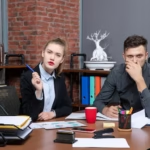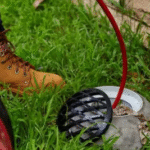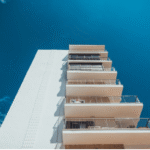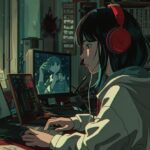Jeremiah Jenkins is a contemporary artist based in Oakland who grew up in Tennessee. Jenkin’s work explores American culture through the lies we tell ourselves, the fears we cultivate, and failures we experience. We chose to speak with Jeremiah because his work has been exposing our cultural dilemmas for some time and his work’s purpose and importance just became more obvious through the election results. Jenkins approached this interview with the same humor and positivity that his work carries into dark conversations. Thank you for speaking with us Jeremiah.
How is your work generally received in Tennessee versus the Bay Area and is it shaped by the context you’re in at the time you’re making it? What characterizes people’s reactions or conclusions in one region versus the other?
The people in Tennessee are not actually all that different from those in the bay area. Sure, there are people who are closed minded in Tennessee, but I’ve met just as many closed minded people in California. I’ve made extremely politically and religiously challenging works in Tennessee that were received very openly. I’ve also made work in San Francisco that was, in my mind, not that controversial and had people literally screaming at me. I make what I make and think what I think despite where I am or who sees it. I haven’t yet really figured out why people react the way they do. I’ll let you know when I do.
That’s actually comforting to hear. As an SF resident, I see a lot of choir preaching going on. If you don’t mind me asking, what got someone screaming at you?
Has the current political climate affected the ways in which you work or how your work is perceived? Has your productivity or intentionality been affected by this?My work may be perceived as more “political” these days, but I’m just reflecting the times. The times are what’s changing and different times call for different types of art.
My intention has always been about the way things are fucked up and they have been fucked up for a long time. There are times when I fantasize about moving to a small town and selling watercolors of birds on the roadside, but the world’s just too fucked up to not talk about. It’s motivational to have such an obviously evil wrong thing like Trump and his white power house to rally against, but the truth is that even if they’re gone there’s still so much work to do.
What is the history behind your fascination with objects? How did that formulate? How much of your own personal narrative informs the objects that you make?
I grew up going to flea markets with my mom. She would always be on the search for some old tool or something interesting to hang on the kitchen wall. She displayed them and made sure everyone knew the stories of the object. It imbued them with meaning and history making them more magical. As I got older I realized that all objects have that nature if looked at correctly. Those meanings can be used like words in a sentence. In my work I try to make a statement to the viewer. My subject is always about something we all share in one way or another. My perspective is informed by my narrative. I’m drawn to certain themes or iconography due to my personal experience, but my main goal is to speak in a general way that is open for a common understanding.
Each one of your sculptures is a very pointed, concise visual message. I imagine there must be a lot of iterating on how to best get your message across. Can you describe your process? What works and what doesn’t work?
My work always starts with a vision. I’ll see something in the news, or real life, or learn something, or find an interesting object, and I’ll get a flash of the seed of the piece. From there the figuring of how to make it work will guide me through the process. Often I discover connections and meanings along the way which surprise me, but let me know I’m moving in the right direction. Finding the right materials and doing the research is where I spend the most time. Once I have everything I need, the piece comes together fairly quickly. I sort of turn around and, boom, it’s done. What works is listening to the idea, the materials, or the universe. What doesn’t work is trying to force it and being impatient.
That performance was at the San Francisco Art Institute Walter and Mcbean galleries. Andrew McClintock of Evergold Projects invited me to be a part of the first exhibition of Gutai in the U.S. Gutai was a group of avant garde Japanese artists in the 50’s and 60’s. Their work was like abstract expressionism on acid, on fire, with strong conceptual frameworks, on more acid.The concept for the SFAI show was to include contemporary recreations of Gutai performances with an “American” twist. I was offered Kazuo Shiraga’s “Challenging Mud” (1956) performance to recreate. What’s more American than wrestling? I dressed in American flags and made a WWF worthy entrance to the song “Real American Hero” which was the song Hulk Hogan used in the 80’s. I also choreographed the “match” based on the Hogan vs Andre the Giant 1988 wrestlemania championship match. You know, like America.
I’m going to continue this project in two ways. One way is to make a full ton of bricks. The other next step for the bricks is to get them into the hands of people who know what to do with them. Not just people who will throw them at a bank or something, but people who are using their skills and positions to try to make a difference.Your work has a levity to it even when you are in conversation with some pretty heavy issues. Do you find it difficult to strike that balance?
That’s just how I operate. Something like 15-20 years ago I learned about this tribe in India called the Aghori. They’re known for drinking out of skulls, marrying lepers, and going full speed towards anything negative with the intention of breaking it down. That approach towards the heavy negative things in the world made a lot of sense to me. I don’t believe in avoiding the bad things, I believe in breaking them apart. Humor is the best tool for making things easier to handle. Plus, the world is a joke.
What do you think the impact and role of the artist is during these highly charged political times? And how does that relate specifically to you and your work?
An artist’s duty is to reflect the time in which they exist and express their truth in the most fitting way. That may mean a lot of things to a lot of different people, but that’s what has always been asked of us. I think artists now need to be religious with how they work. Being an artist means you are tapping into some divine source inside of you and getting a message. That’s a responsibility. You don’t go to the divine and get a message and do nothing with it. You go, get that message, and you bring it to the fucking world. Stand on a street corner and shout it, give it away, paint a mural that everyone will see, share it! Get that message out there. That’s my plan.
There is this loud noise in the world saying that people don’t matter, wealth is power, your neighbor is your enemy, and so on and so on. I just plan on counteracting that noise in any way that I can. For me, it isn’t a loud response, it’s a quiet truthful conversation through my work. I’m just going to keep doing that.









